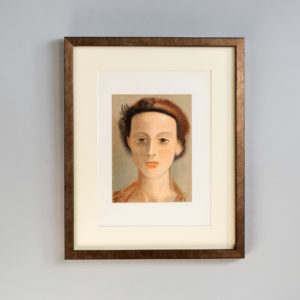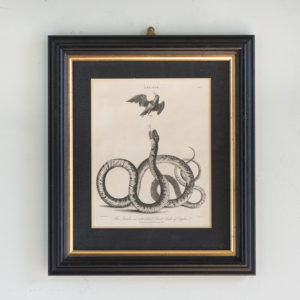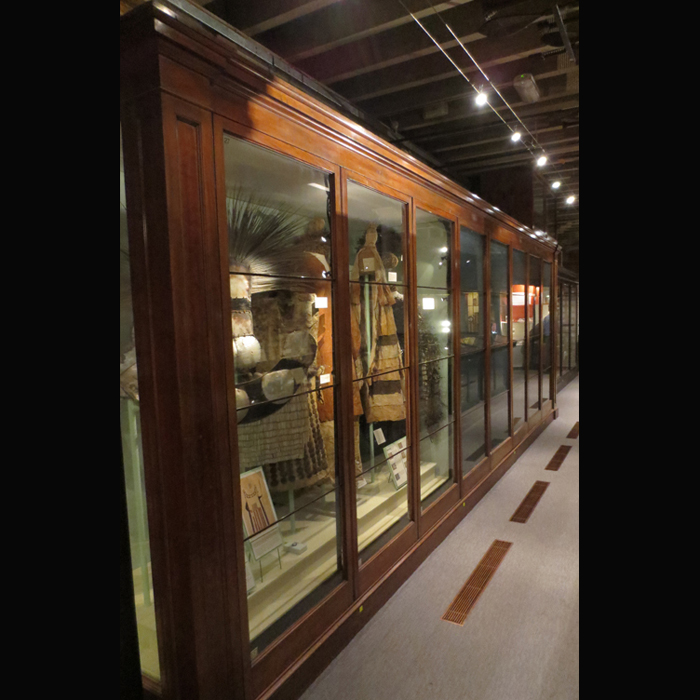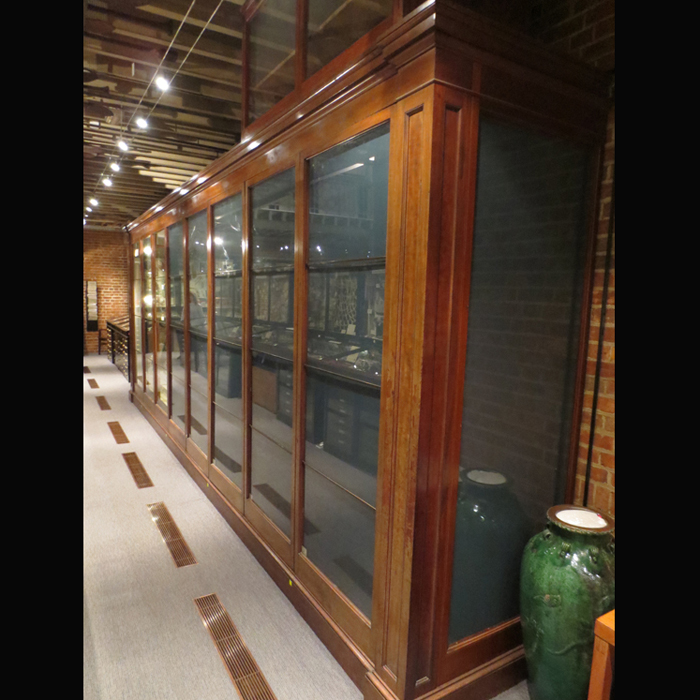Archived Stock - This item is no longer available
The Captain Cook Cabinet, a huge Victorian glazed mahogany museum display case,
the vitrine with a stepped cornice raised on panelled pilasters to each end and a series of eight hinged doors above the stepped plinth,
SOLD OUT
In stock
This extraordinary cabinet has long had the honour of housing the Pitt River's Museum's priceless collection of artefacts brought back by Captain James Cook's first and second expeditions on which he discovered and mapped the east coast of Australia, New Zealand and many Pacific islands (1768-71 and 1772-75).
The cabinet, in a flame mahogany - probably Honduran or Cuban - stands apart from the other, numerous vitrines at the Museum and LASSCO suspects that it may well have started its life at the British museum: it is similar to others that we have had from Bloomsbury in the past. it has been in Oxford for many decades and The Pitt Rivers do not have a record of its acquisition in order to support this theory.
Condition: the cabinet dis-assembles into its component parts with the show-timber on the cornice and plinth being the most challenging at 7m long. The polish of the mahogany has deteriorated with age - commensurate with a few decades of museum life. The locks are still present and we have a key.
Recently Viewed Items
-

Portrait by Andre Derain, Verve Vol 2 / No. 5-6.
£800Portrait by Andre Derain, Verve Vol 2 / No. 5-6.
The Verve Review was a purposefully luxurious. It ran from 1937 to 1960, but with only 38 editions available, due to the high degree of design and editorial work dedicated to each issue. Each edition contained unique lithographic prints, commissioned by the editor, and each cover a double-page lithograph elaborated by one of the artists contained within. It was the brainchild of its editor Stratis Eleftheriades, a Greek National who moved to Paris in the early thirties to take part in the growing Modernist movement, writing under the name of Teriade.£800 -

Early nineteenth century framed snake engravings
Early nineteenth century framed snake engravings
published by J. Adlard 1801 for John Wilkes, in ebonised frames. 'Anguis - Plate I - The Jaculus, or articulated Dart Snake of Ceylon'.


